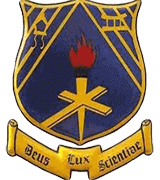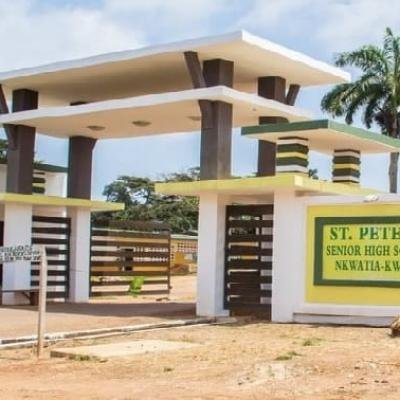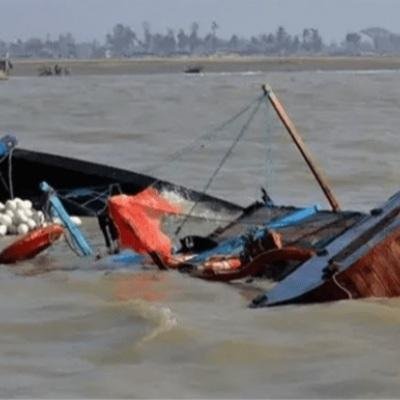History of Opoku Ware School
There was no Government Secondary school anywhere in Ashanti even up to 1945. Boys and girls of this region whose parents could afford the cost of secondary schools where able to send their children to school. This meant that members of the catholic church who wished to have their children educated in accordance with catholic traditions had to send them to St. Augustine's college or Holy child college, both in cape coast. The need for a catholic secondary school was therefore greatly felt both by the clergy and laity of the Catholic Church.
The years after 1945 saw a lot of agitation for catholic Secondary Schools in Ashanti . The catholic elite in the Church in Kumasi called on the Bishop to make a start if the Government was not ready to give the church a school. The Bishop of his part, wrote several letters and held several consultations with the Director of Education, Gold Coast ( Ghana ) in order to impress upon him the need for Catholic Secondary Schools.
At long last. God answered the prayers of his people. At a meeting held on January 31, 1951, by the top officials of the Education in Department, a decision was taken to build for the church a Roman Catholic Mission Secondary School. The Government was to provide all the funds for the building of the school. The school was meant for 360 students with a possible expansion to the sixth form. It was to be developed according to a ten-year Development plan, and the final cost was estimated at £250,000 (¢500,000.00) cedis.
On July 14, 1951, the tender Notice for the construction of the school building appeared in the Gold Coast Gazette notice No. 1308. An expatriate constructing firm, known as Fry, Drew and co. was awarded the contract to build classrooms, dormitories, laboratories, administration block and staff bungalows. Through the initiative of Nana Antwi-Boasiako and the late Asafohene (Akwamuhene), the chiefs and people of Odeneho Kwadaso and Fankyenebra (Baworo) provided the Catholic Church with a parcel; of land for the school.
The first batch of 70 students arrived at the school originally called Yaa Asantewaa College which later changed to Opoku Ware Secondary School that same year on February 22, 1952. The Pioneer headmaster was Rev. Peter Philip Burgess, and the other members of staff were Mr. Amoabeng, Mr. Anane-Agyei, Mr. Twimasi-Ankrah and Mr. Baffoe. The first dormitory was St. Paul and the flat attached served both as the Headmaster's residence and an office. Of the numerous problems which faced the school, the most serious were water and electricity. However, with great determination and indomitable courage, Rev. Burgess who laid the strong foundations on which the school stands today, forged ahead and made the best of a bad situation.
The first batch of 70 students arrived at the school, originally called Yaa Asantewaa College, in 1952. The name was changed to Opoku Ware School that same year on February 22, 1952.
The pioneer Headmaster was Rev. Peter Philip Burgess, and the other members of staff were Mr. Amoabeng, Mr. Anane-Agyei, Mr. Twumasi-Ankrah and Mr. Baffoe. The first dormitory was St. Paul, and the flat attached to the dormitory served as both the Headmaster's residence and an office.
There was no government secondary school anywhere in the Ashanti Region even up to 1945. The youth of the region whose parents could afford the cost of a secondary education had to travel south across the River Pra in order to attend secondary schools.
This meant that members of the Catholic Church who wished to have their children educated in accordance with Catholic traditions had to send them to St. Augustine's College or Holy Child College, both in Cape Coast. The need for a Catholic Secondary was therefore greatly felt both by the Clergy and Laity of the Catholic Church.
The years after 1945 saw a lot of agitation for Catholic Secondary Schools in Ashanti . The Catholic elite in Kumasi called on the Bishop to make a start if the Government was not ready to give the Church a school. The Bishop on his part, held several consultations with the Director of Education, Gold Coast (Ghana), to impress upon him the need for Catholic Secondary Schools.
These efforts soon bore fruition. At a meeting held on January 31, 1951, by the top officials of the Education Department, a decision was taken to build a Roman Catholic Mission Secondary School. The Government was to provide all the funds for the building of the school. The school was initially meant for 360 students with a possible expansion to the Sixth Form. It was to be developed according to a ten-year Development Plan, and the final cost was estimated at 250,000 pounds sterling.
On July14, 1951, the Tender Notices for the construction of the school building appeared in the Gold Coast Gazette Notices No. 1308. An expatriate construction firm, Fry, Drew and Company was awarded the contract to build classrooms, dormitories, laboratories, and administration block and staff bungalows.
Through the initiative of Nana Antwi-Boasiako and the Asafohene (Akwamuhene), the chiefs and people of Odeneho Kwadaso and Fankyenebra (Baworo) provided the Catholic Church with a parcel of land for the school.
A great deal of expansion took place between 1952 and 1958. By 1955 the school had six dormitories, ten classrooms, three science laboratories, an administration block, dining hall and kitchen library and 17 staff bungalows. Student population stood at 450.
A Sixth Form Department was started in 1958, to provide courses in both the Arts and Sciences. A Cadet Corps was also formed in 1960.
Opoku Ware School had taken its rightful place among the elite Secondary Schools started in Ghana, and even by 1960, there was every indication that future really looked bright. Agreat deal o expansion took place between 1952 and 1958. By 1955 the school had six dormitories, ten classrooms, three science laboratories to cater for physics, chemistry and biology. It also had an administration block, dinning hall and kitchen, library and 17 staff bungalows. The student population stood at 450. A sixth form Department was started in 1958, to provide course in both the Arts and Science.







